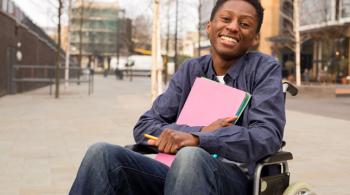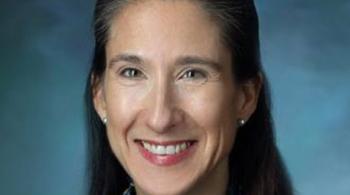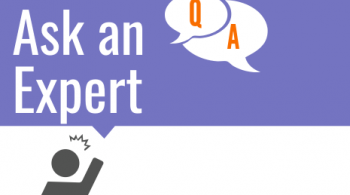March 8, 2016
In preparation for Autism Awareness month in April, Lisa Carey, M.A. (LC) interviewed Dr. Ericka Wodka (EW) to answer some educator questions about autism spectrum disorder (ASD).
Dr. Ericka Wodka is a pediatric neuropsychologist at the Center for Autism and Related Disorders (CARD) and the Department of Neuropsychology at Kennedy Krieger Institute. She is also an assistant professor of psychiatry and behavioral sciences at the Johns Hopkins University School of Medicine.
LC: Dr. Wodka, can you tell me a bit about yourself?
EW: I am the supervising neuropsychologist at the Center for Autism and Related Disorders at the Kennedy Krieger Institute. Clinically, I provide evaluations for children with autism spectrum disorders (ASD), as well as suspected ASD. My research interests include studying attention, language, and sensory functioning in children with ASD.
LC: Thanks to awareness campaign efforts, most educators are somewhat aware of autism. What prevailing misconceptions about ASD do you see among educators?
EW: Understanding the individual needs of children with ASD is the most challenging aspect of working with these children. While they all share the behavioral characteristics of deficits in social communication and repetitive behaviors, the expression and impact of these interfering behaviors is very individual, as are the co-occurring symptoms (e.g., anxiety, learning disabilities). At times, the co-occurring symptoms can be more impairing than the ASD-related behaviors, and must be considered in the development of instructional accommodations and supports.
LC: The issue of co-occurring symptoms is very interesting. Can you give an example of how anxiety might co-present with ASD and cause problems within the classroom?
EW: Some children with ASD who also have anxiety can be perfectionistic. They have unrealistic thoughts that their work is not as good as others' or is not perfect, which causes them distress. This can impact how quickly they begin and complete their work (class assignments, tests), or interfere with them turning in what they believe to be less than perfect products.
LC: What should a teacher consider including in a classroom that serves students with ASD?
EW: Posting visual schedules and using visual timers and cues to support children through transitions can help support their behavior and compliance. When used carefully, technology can also be a great tool to support attention and learning. That said, going back to my first point, considering the individual child's needs is most important when designing supports within the classroom, which may vary.
LC: I like that you emphasize “when used carefully.” Can you give an example of a digital tool that might be useful in the classroom?
EW: The technology doesn't have to be fancy; simple computers and tablets can run programs that support learning for children with ASD. I used the word "carefully," because these devices can provide access to other opportunities that detract from learning (e.g., internet searching, games) and can increase the interference of hyperfocused interests to classroom learning. Achieving a balance between using electronics for learning/motivating students to learn while not distracting from learning is the difficult challenge.
LC: If you could change one thing about schools to make them a more inviting place for students with autism, what would it be?
EW: Children with ASD have great difficulty integrating into typical school activities; however, feeling accepted and successful is such an important component to their social emotional development. Providing clubs and group activities that are more suited to the needs of children with ASD will help support their participation and growth. For instance, children with ASD often are challenged by group sports; instead, offer opportunities for individual sports (e.g., martial arts) and clubs that are more suited to their interests (e.g., Legos, computer programming, and history).
LC: I’ve seen a lot of schools attempting to be more inclusive of students with ASD, so considering how students with ASD can best participate socially is really good advice. Do you have any other parting tips for our audience of educators?
EW: Children with autism are at risk for underachieving due to the interference of their autism-related behaviors. Supporting these behaviors to capitalize and grow these skills is the greatest challenge faced by educators, and requires creativity and flexibility in their approach.















